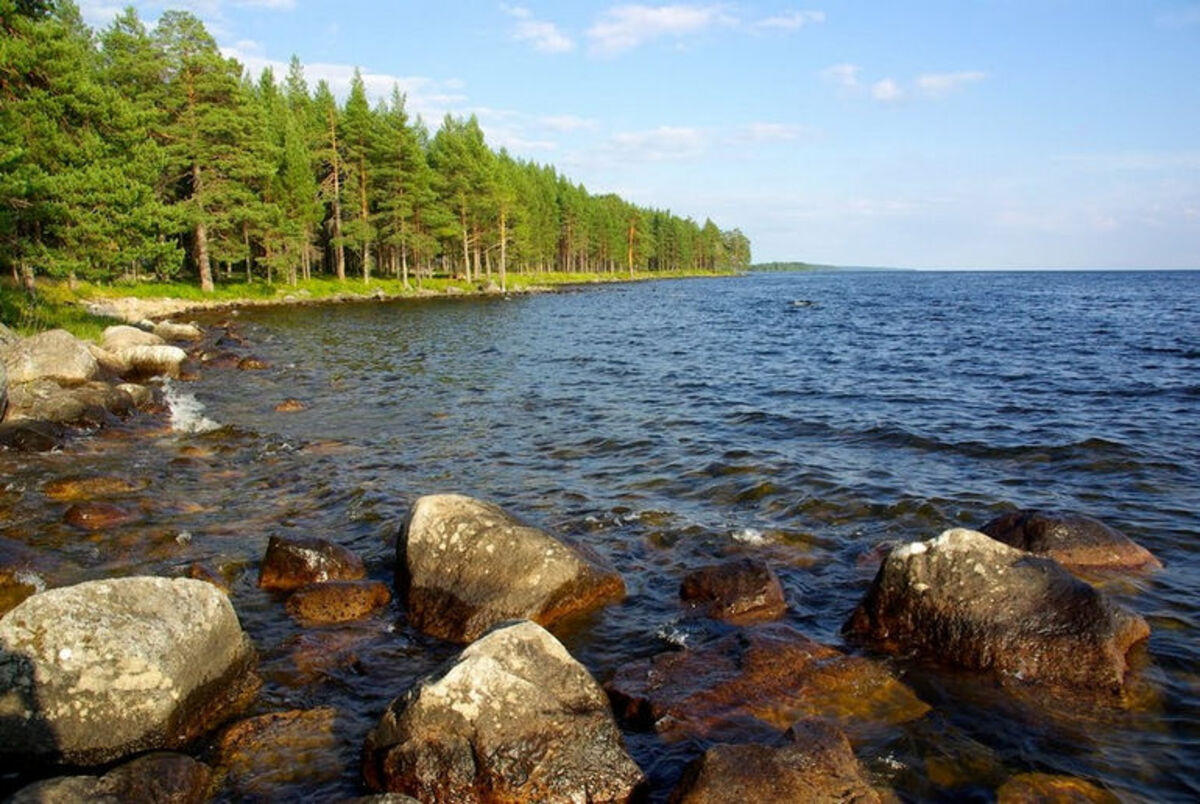Lake Onega is one of the largest and most picturesque lakes in Europe, located in the northwestern part of Russia. It has a long history, unique nature, and cultural significance for the peoples who have lived along its shores. This lake is mentioned in ancient Russian chronicles and continues to attract scientists, tourists, and artists. Interesting facts about Lake Onega will help you better understand its geography, biological diversity, and its role in the history of northern lands. Below are some fascinating facts you may not know.
- Lake Onega is the second largest freshwater lake in Europe after Lake Ladoga. Its area is approximately 9,700 square kilometers, which is larger than some European countries. The length of the lake from north to south exceeds 200 kilometers.
- The average depth of the lake is 30 meters, but in some places, it reaches more than 120 meters. The deepest areas are located in the central part of the lake. Due to this, Lake Onega maintains a stable temperature at great depths even in winter.
- More than 50 rivers flow into Lake Onega, including the Shuya, Vodla, Andoma, and many smaller streams. The only river that flows out of the lake is the Svir, which connects it to Lake Ladoga. This makes Lake Onega an important part of the historical waterway from the Baltic Sea to the Volga River.
- There are over 1,600 islands in the lake, the largest of which is Kizhi. This island is famous for its unique ensemble of wooden churches and chapels, built without a single nail. The architectural ensemble of Kizhi is included in the UNESCO World Heritage List.
- The lake was formed by glacial processes around 12,000 years ago, after the retreat of the glacier. It is located in a tectonic depression, which gives it an elongated shape with many bays and inlets. The bottom of the lake is covered with boulders, gravel, and moraine debris.
- Several major cities are located on the shores of the lake, including Petrozavodsk, the capital of the Republic of Karelia. The city was founded by Peter the Great as a cannon factory and remains an important center of industry and culture in the region. Petrozavodsk is also known for its picturesque lakeside promenade.
- More than 40 species of fish inhabit Lake Onega, including carp, salmon, and perch. The Onega whitefish is particularly valued for its excellent taste. The lake is also an important spawning ground for many fish species.
- Lake Onega is known for its changing weather, especially in its open sections. Even in summer, sudden storms, strong waves, and fog can appear. This makes navigation on the lake difficult, but it also adds dramatic beauty to the landscape.
- The lake has complex underwater currents, and several sunken ships, including old barges and steamships, have been found at the bottom. Some of these are being studied by researchers and divers. These discoveries provide insight into the trade and transportation of past centuries.
- The lake is home to unique freshwater jellyfish — small, harmless creatures that appear in warmer months. Their presence serves as a biological indicator of water purity. These jellyfish are completely safe and are a sign of an ecologically clean water body.
- In winter, Lake Onega completely freezes over, creating an ice surface that locals use as a temporary road. The ice path to Kizhi Island is particularly popular and is specially prepared for tourists every year. The thickness of the ice in some areas exceeds one meter.
- Many bird species inhabit the shores of the lake, including seagulls, ducks, swans, and eagles. This makes the region a great place for ornithologists and wildlife photographers. During migration, thousands of migratory birds stop here to rest.
- The lake holds great cultural significance for the Karelian, Russian, and Finnish peoples. Its shores are the source of many legends, epics, and folk songs. Lake Onega is often mentioned in literature, painting, and folklore of the North.
- In the 20th century, the lake became part of the Volga-Baltic waterway, connecting the Volga River to the Baltic Sea. This made Lake Onega an important object for freight transportation. It is also a route for tourist cruises between St. Petersburg and Moscow.
- Numerous nature reserves and protected areas are located on the shores of the lake. Work is being done to preserve the ecosystem, fight pollution, and maintain biological diversity. Lake Onega is one of the few large lakes in Europe that has maintained relatively clean ecology.
- In summer, the lake becomes a center for recreation and water tourism. Popular activities include kayaking, fishing, yachting, and swimming. Along its shores, there are recreation centers and eco-tourism complexes.
These interesting facts about Lake Onega show that it is not just a geographical object, but also a cultural, ecological, and historical treasure. Its waters conceal many mysteries, natural wonders, and human stories. Fascinating facts about it encourage deeper exploration, preservation, and rediscovery. Lake Onega is a place worth exploring, protecting, and continually discovering anew.





